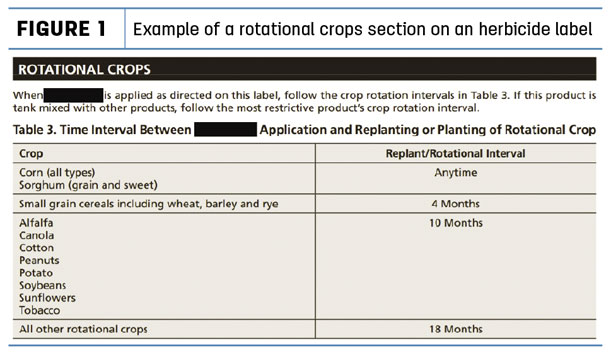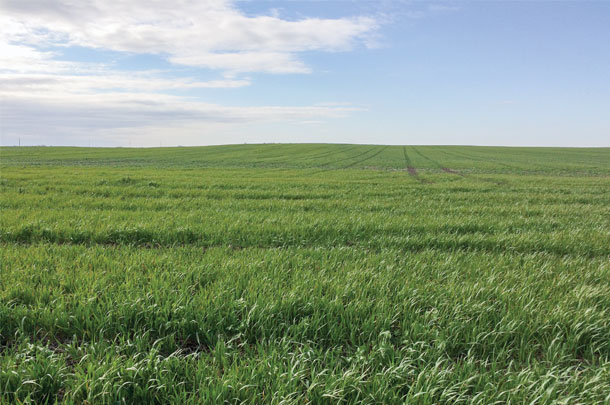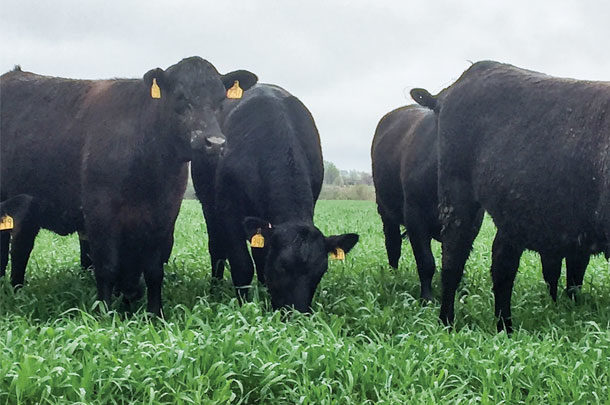Cover crops are an old concept made popular again by recent state and federal funding, concerns for soil and water quality, and a continued interest in preserving cropland for future generations.
At $25 to $50 per acre, these crops are not an inexpensive addition to the landscape, so farmers are cleverly finding ways to “make the cover crops pay for themselves.”
Use of cover crops for grazing is an excellent way to reduce hay use and improve the efficiency of the system. The addition of this third crop in the rotation may come with some hidden herbicide concerns farmers need to be aware of.
“Will X product injure my cover crop? Is it legal to plant Y crop after using this herbicide? Is it legal to graze the cover crop if X product was applied earlier in the season?” Let’s discuss several important things to know about herbicides and grazing cover crops.
Cover crops are planted to be left as green cover on a field; these crops do not leave the field they were planted in. When a cover crop is grazed, it technically is no longer a cover crop; it is a forage crop.
If the herbicides that were applied are persistent, they could be present in the cover crop when animals graze the field. It is important to consider the risks herbicides might pose to both the cover crops and the animals that graze them.
Each herbicide label has a rotational crop section that describes the time interval required between herbicide application and the planting of specific crops. The time interval varies with sensitivity of the crop to the herbicide, but other factors are considered when writing the label. With significant dollars invested in development of herbicide labels, companies must pick and choose which species they include in the rotational crop section of a label.
Those crops are likely to be the crops commonly grown in rotation with whatever crop the herbicide was developed for. Popular cover crop species are often not included in the rotational crop section of herbicide labels because, until recently, they were not commonly used in rotation with corn and soybeans.
If the crop is not listed in the rotational crops section of a herbicide label, it falls into the “all other crops” category of the rotational restrictions. This section often comes with an 18-plus-month time period before farmers can legally plant that crop following application of the herbicide.
Each label will differ in its listing of rotational crops. Many herbicide labels will list wheat, some will list cereal rye, oats and triticale, but most will not list less common crops like turnip, radish, rapeseed, hairy vetch or numerous others.
Figure 1 shows an example of a rotational crops section on an herbicide label. This label requires a four-month interval following application before planting small grains like rye, wheat and barley.

No other common cover crop species should be planted during the same growing season as application of this product.
These rotational crop sections on labels are extremely important to pay attention to when considering both planting and grazing of a cover crop. It provides the herbicide user information important to avoid injuring the following crop as well as protecting both humans and animals from herbicide residues in the following crop.
It is also important to check the label for any specific restrictions regarding grazing of crop residue or rotational crops. The label from Figure 1 also states not to graze or feed forage from treated areas for 45 days following application. Most herbicide labels will have some time interval between application and grazing or feeding of treated crop residue.
Some labels specify no feeding or grazing of treated crop residue, making it impossible to graze a cover crop on treated fields. Harvest of these cover crops as hay or wet feed may be possible. The label is the law, so all farmers should check labels for specific information regarding rotational crop restrictions and use this document only as a guideline.
Iowa State University developed a document, “Herbicide use may restrict grazing options for cover crops,” (CROP3082) that lists herbicides for use in corn and soybeans that have rotational crop restrictions of less than 4.5 months and allow for grazing of treated crop residue.
 This oat and radish mixture could not be grazed following soybeans due to the herbicide program used. Photo by Rebecca Vittetoe.
This oat and radish mixture could not be grazed following soybeans due to the herbicide program used. Photo by Rebecca Vittetoe.Download that document from online (Herbicide use may restrict grazing options for cover crops).
While the list is not comprehensive of all herbicides or alternative trade names for products, it provides farmers a better idea of whether grazing a certain species will fit with their current herbicide program and crop rotation or if adjustments are necessary.
Cereal rye, oats, wheat and barley are explicitly listed, but farmers looking at other species will need to check individual herbicide labels.
It will likely be difficult to create herbicide programs that allow for grazing of cover crops and impossible to create herbicide programs that allow for grazing of cover crop mixtures until herbicide manufacturers provide evidence that planting of these species the fall after application is safe.
Until then, grazing a grass cover crop like cereal rye or wheat will be easiest following corn, but be sure to check your herbicide labels for rotational crop restrictions, restrictions on grazing or feeding treated crop residue, and make adjustments to herbicide programs where necessary.








